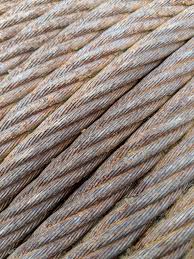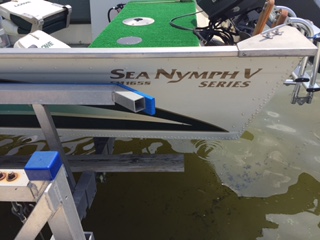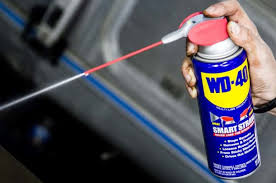Cable Maintenance
In last weeks article, (https://wisconsinpws.com/boat-lift-cable/) we discussed why your boat lift cable would not last forever.
This week we get into more detail and explain what you can do. We discuss the most critical causes of cable problems and what you can do to protect them.
There are two types of cable material used for boat lifts:
- Galvanized; and
- Stainless steel.
Galvanized Steel is made of carbon steel which on its own is not resistant to rust. It is made corrosion resistant by running the cable through a hot bath of molten zinc. As long as the coating is on the wire “fibers,” it will resist the formation of rust.
Stainless Steel is also made of carbon steel. However, when mixed with about 10% chromium, it will form a stainless steel cable. It resists oxidation or corrosion. The chromium in the steel forms a layer of chromium oxide that promotes resistance to corrosion.
When the stainless steel wire is exposed to oxygen, the protective coating will REGENERATE. The anti-corrosion protection of the chromium maintains the resistance of the steel to rust.
Galvanized steel is less expensive than stainless steel due to the differences in the processing of each. Galvanized steel is durable, and each cable is sized to handle the loads created by your boat lift.
No – you can NOT increase the boat lift rating by merely increasing the size of the cable used. If you simply increase the diameter of the cable, you must also increase the size of the drum, or you risk early failure. The larger wire is stiffer and cannot bend around a smaller drum without damage.
Keep this information in mind if a neighbor or visitor wants to put their boat on your lift when it is empty. Know the weight of the new boat.
See https://wisconsinpws.com/boat-lift-calculations-part-4/ for additional information about cable maintenance.
Boat Positioning
Make sure your boat is positioned correctly on the lift. If it’s not far enough forward, it will put excessive weight on the rear cables and the frame structure. On the other hand, if the boat is too far forward, you may damage the lower motor assembly or break the front cables due to excess weight.
In general, a boat has most of its weight at the stern where the motor is. As a result, to maintain proper balance on your lift, the boat stern should be about 6″ to12″ from the lift rack. See the above article for more information.
When properly balanced, the weight is evenly distributed across the lift rack. A balanced boat prevents overloading one end of the lift.
Note – unusually long boats, may be an exception to the 6-12″ rule. You must be especially careful to find the proper balance. Proper balance will minimize potential damage to the cables.
To summarize, take care of your cables, and they will last for years.
What Cable Maintenance Can I do by myself?
1. Make a visual inspection of the cables regularly. It is helpful to do this when the lift rack is in its lowest position to expose more cable. Look for chafing, corrosion or a flat cable especially near the winch box.
Don’t forget – do this inspection with leather gloves on to protect your hands.
2. At the beginning of the boating season, be sure to apply a burst of penetrating oil to the top of the cables around the winch drum. The penetrating oil will work its way down the wires as needed. Raise the rack halfway up and carefully apply another burst of penetrating oil to the winch drum. NEVER use grease on the cables. It traps moisture inside the strands. Do not be afraid to do it more often during the summer months, if you use the boatlift frequently.
Most quality lifts use Stainless Steel cables for a majority of cables and (1) galvanized cable as the main winch cable.
3. Watch the winch drum to ensure that the cable is wrapping smoothly on the drum.
Stainless steel lift cables also benefit from penetrating oil. We recommend this procedure in Spring, halfway through the boating season and again in Fall after removal.
To summarize, take care of your cables, and they may last for years. Remember, the cables and the winch do all the “work” on your lift. They do the lifting by raising the rack assembly with the weight of the watercraft on it. That’s a lot of weight so the cables must be well maintained.
In Conclusion
In Spring and Fall (and at least once during the summer months), put a short blast or two of PENETRATING oil on the cables wrapped around the winch drum from the top of the winch. Do not soak the wire until it drips when in the water. You don’t want to contaminate the water. Use only penetrating oil as the lubricant.
NEVER use grease (it traps the moisture inside the cable accelerating its deterioration).
Cable maintenance begins with inspecting cables for frays and rust – Caution – wear leather gloves to prevent injury to your hands. Check near the top of the winch cable as this is the most common area for frays. Replace as needed, if corrosion is present.
Check the alignment of all cables on the pulleys. Simply follow the cables down until they wrap around a pulley. Are they On a pulley or is the cable off to one side? Call PWS if they are.
With your watercraft on the rack – check for any slack in the cables. All cables should be equal in tension. Contact PWS for adjustment, if needed.
Look for cable corrosion near the winch with the rack fully down (but without slack in the lifting cables.
Remember, the cables and the winch do all the “work” on your lift. They do the lifting by raising the rack assembly with the weight of the watercraft on it. That’s a lot of weight so the cables must be well maintained.
Remember
Pier & Waterfront Solutions (PWS) specializes in all ShoreMaster docks, lifts, and accessories.
We are located in the center of Door County at 7325 St Hwy 57, just south of Sturgeon Bay at the intersection with Idlewild Road. Our staff looks forward to serving all of your waterfront needs.
Call Jerry at 920-493-4404 or Email Jerry@wisconsinpws.com for more information.








